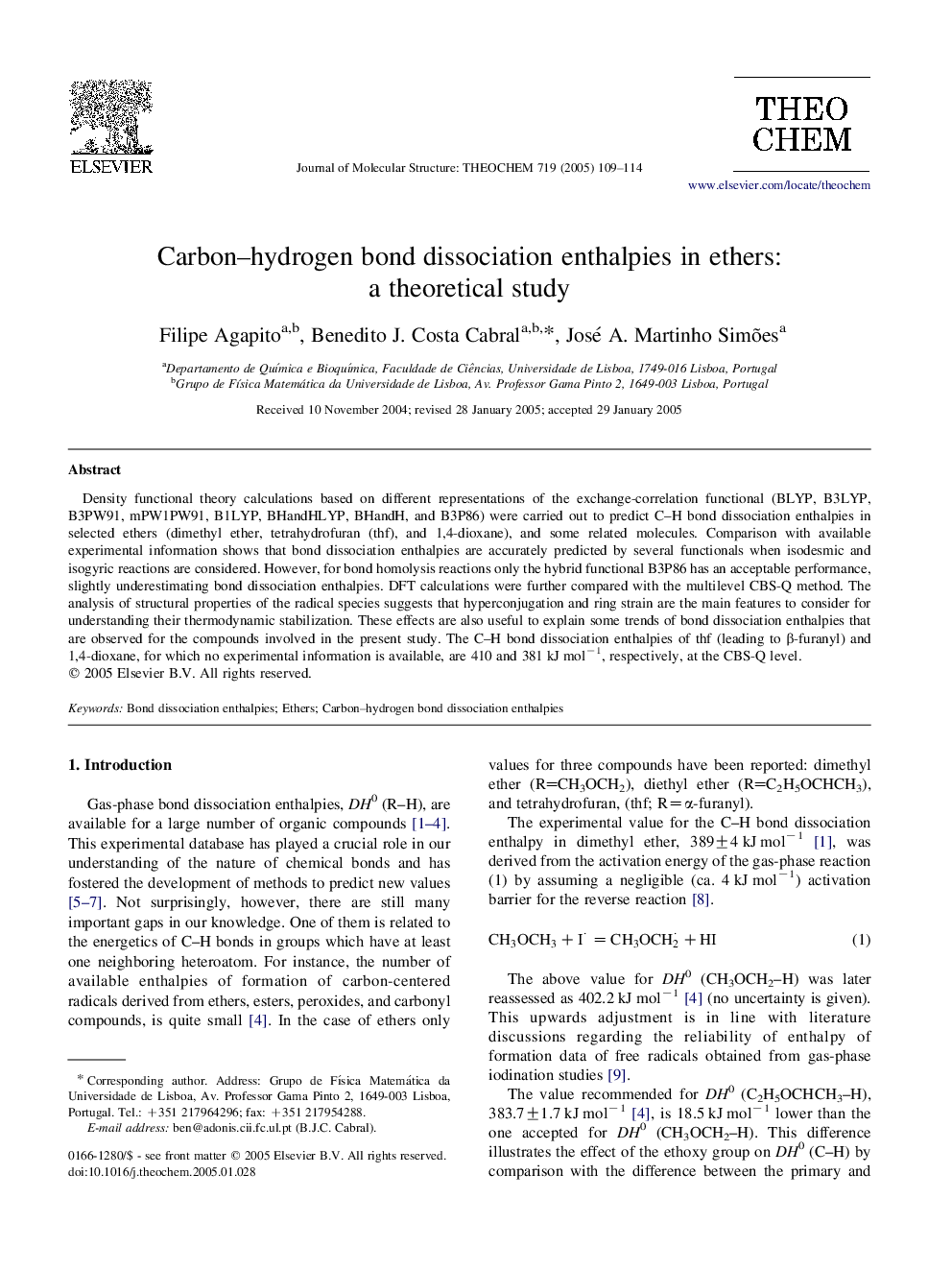| Article ID | Journal | Published Year | Pages | File Type |
|---|---|---|---|---|
| 9591829 | Journal of Molecular Structure: THEOCHEM | 2005 | 6 Pages |
Abstract
Density functional theory calculations based on different representations of the exchange-correlation functional (BLYP, B3LYP, B3PW91, mPW1PW91, B1LYP, BHandHLYP, BHandH, and B3P86) were carried out to predict C-H bond dissociation enthalpies in selected ethers (dimethyl ether, tetrahydrofuran (thf), and 1,4-dioxane), and some related molecules. Comparison with available experimental information shows that bond dissociation enthalpies are accurately predicted by several functionals when isodesmic and isogyric reactions are considered. However, for bond homolysis reactions only the hybrid functional B3P86 has an acceptable performance, slightly underestimating bond dissociation enthalpies. DFT calculations were further compared with the multilevel CBS-Q method. The analysis of structural properties of the radical species suggests that hyperconjugation and ring strain are the main features to consider for understanding their thermodynamic stabilization. These effects are also useful to explain some trends of bond dissociation enthalpies that are observed for the compounds involved in the present study. The C-H bond dissociation enthalpies of thf (leading to β-furanyl) and 1,4-dioxane, for which no experimental information is available, are 410 and 381 kJ molâ1, respectively, at the CBS-Q level.
Keywords
Related Topics
Physical Sciences and Engineering
Chemistry
Physical and Theoretical Chemistry
Authors
Filipe Agapito, Benedito J. Costa Cabral, José A. Martinho Simões,
